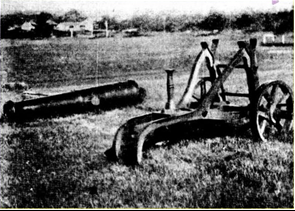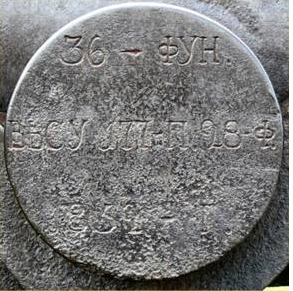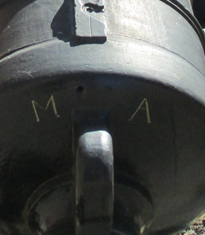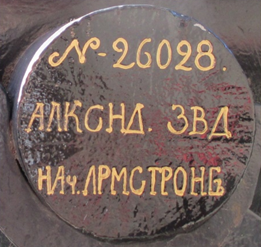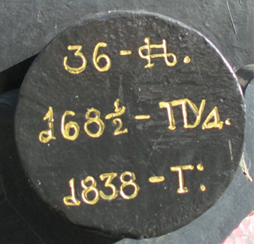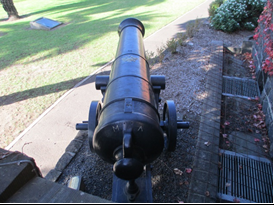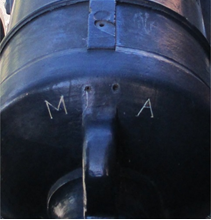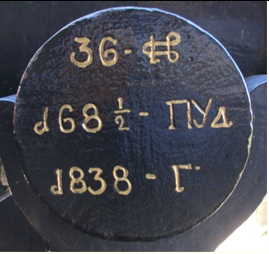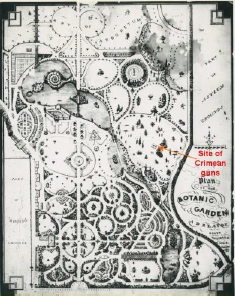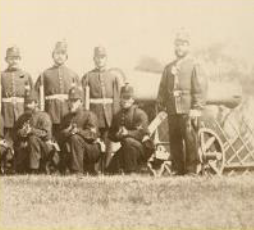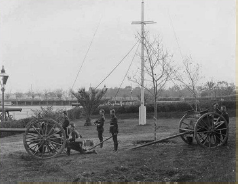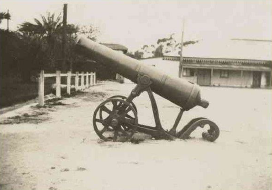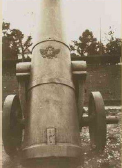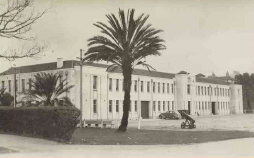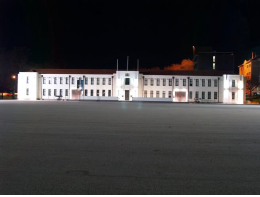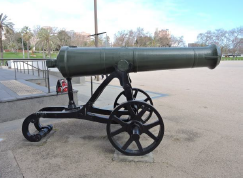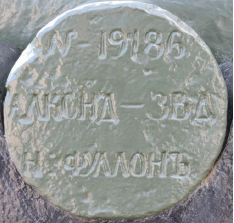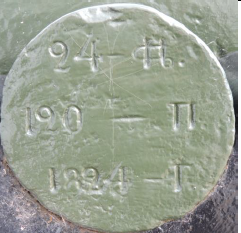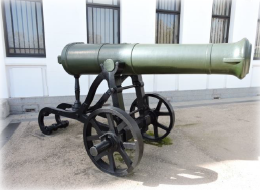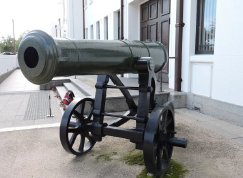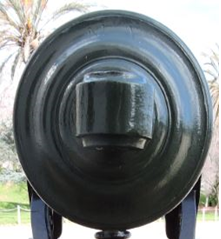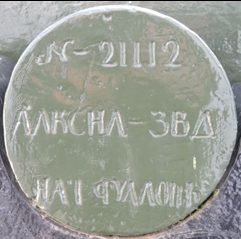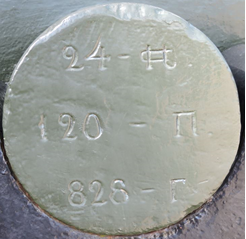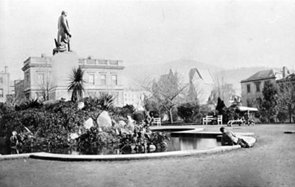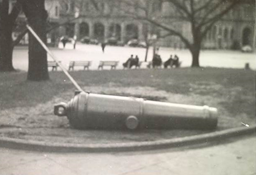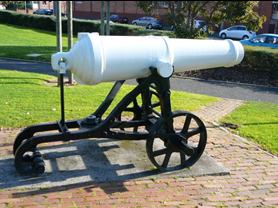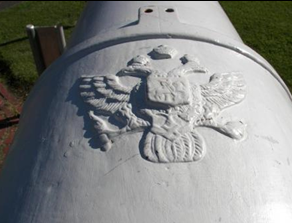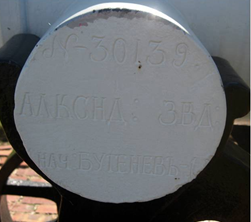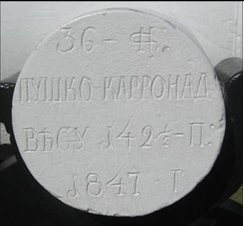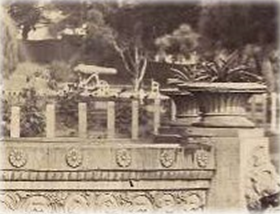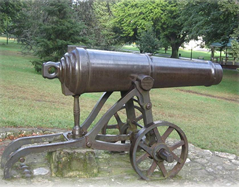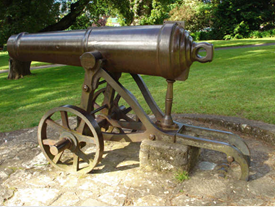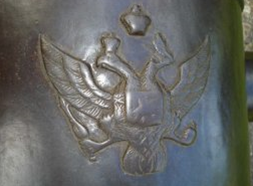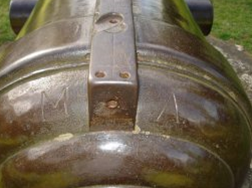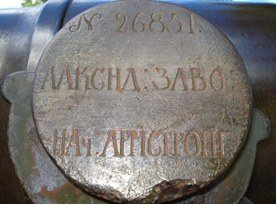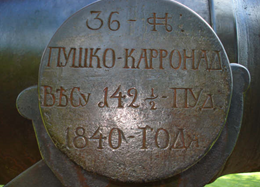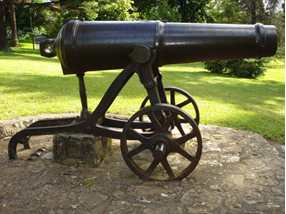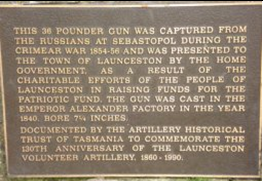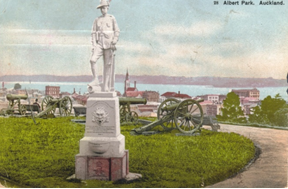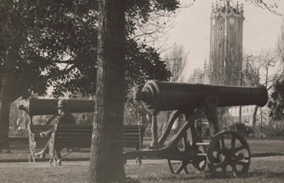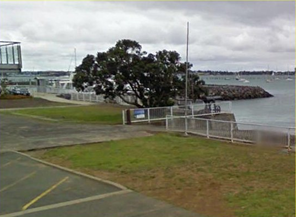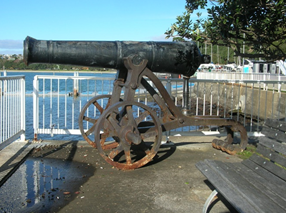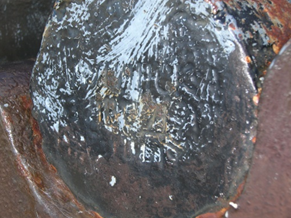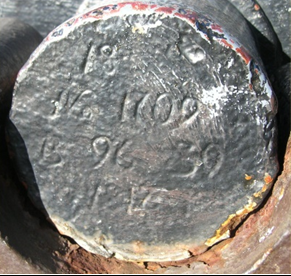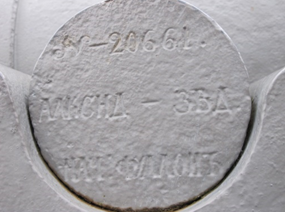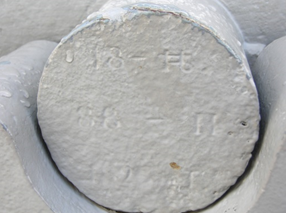|
||||||||||||||||||||||||||||||||||||||||||||||||||||||||||||||||||||||||||||||||||
| Have a Question / Feedback ? | Submit | Search Our Site |
|
| The Crimean War Trophy Guns in Australia and New Zealand | ||||||||||||||||||||||||||||||||||||||||||||||||||||||||
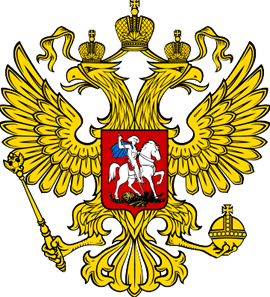 |
||||||||||||||||||||||||||||||||||||||||||||||||||||||||
|
||||||||||||||||||||||||||||||||||||||||||||||||||||||||
| New South Wales – 36 Pounder Model 1848 | ||||||||||||||||||||||||||||||||||||||||||||||||||||||||
It would appear that the guns were not received in Sydney with any enthusiasm. No mention of their arrival in October 1858 has been found in the newspapers and it is only mentioned in a reply to a question to the Colonial Secretary by Mr Windeyer reported in the Sydney Morning Herald of 23 March 1861: ‘Have the Government received from England two Russian guns, presented to the colonies as trophies of the Crimean war; if so what has become, or what is intended to be done with the same. ‘Mr COWPER, in reply, stated that it was true the Government had received (in October 1858) two Russian guns. The Municipal body had requested to have them placed in some conspicuous part of the city and he believed that request had been complied with. He was not aware whether they had been actually handed over to that body.’The trophy guns in NSW were initially positioned flanking Governor Bourke's statue on the Domain, near the old Bent Street entrance. The statue was the first sculpture in Australia meant for outdoor exhibition. It was unveiled in February 1842. Although concrete bases had been built for the cannons there does not appear to have been any plaques describing what they represented. In 1927 the statue was relocated to the corner bay of the west wing of the Mitchell Library in consequence of the expansion of the boundary of the Royal Botanical Gardens in 1910 and the construction of the new State Library of New South Wales. The two Russian guns may have been moved sometime before the statue as the Sydney Morning Herald of 21 June 1927 contained a photo of one gun and a report:
‘Two Russian cannon which formerly stood near the entrance to the Botanic Gardens were dismantled and removed to Centennial Park, where they have lain uncared for during the past twelve months. ‘It is stated that the failure to re-erect the guns is due to a dispute whether the Agricultural department or the Public Works Department should bear the cost of placing the trophies in position.’’ They were mounted in Centennial Park in 1927 and flank the "We Won" statue. So from guarding a popular Governor to now guarding a footballer, how life has changed for these significant trophies! |
||||||||||||||||||||||||||||||||||||||||||||||||||||||||
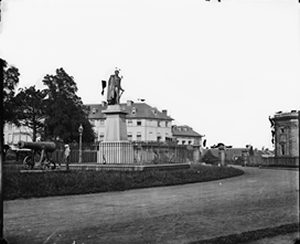 |
 |
|||||||||||||||||||||||||||||||||||||||||||||||||||||||
|
|
|||||||||||||||||||||||||||||||||||||||||||||||||||||||
|
||||||||||||||||||||||||||||||||||||||||||||||||||||||||
| 36 Pounder Model 1848, , serial number 31585, on Iron Garrison (Venglovsky) carriage | ||||||||||||||||||||||||||||||||||||||||||||||||||||||||
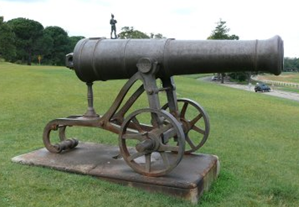 |
 |
|||||||||||||||||||||||||||||||||||||||||||||||||||||||
|
||||||||||||||||||||||||||||||||||||||||||||||||||||||||
 |
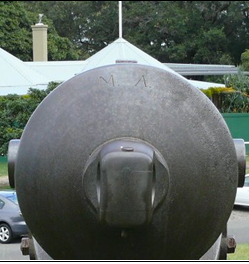 |
|||||||||||||||||||||||||||||||||||||||||||||||||||||||
| Russian Imperial Eagle | M A |
|||||||||||||||||||||||||||||||||||||||||||||||||||||||
Morskaya Artillerii Translate to Naval Artillery |
||||||||||||||||||||||||||||||||||||||||||||||||||||||||
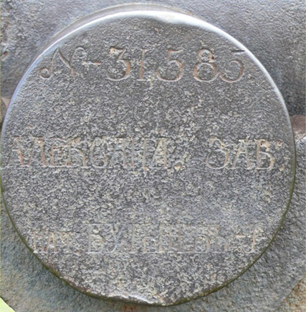 |
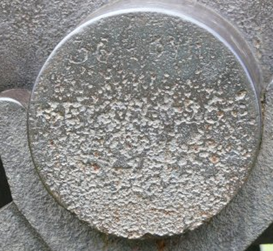 |
|||||||||||||||||||||||||||||||||||||||||||||||||||||||
| Left Trunnion | Right Trunnion | |||||||||||||||||||||||||||||||||||||||||||||||||||||||
| N - 31585
АΛЕКСАНΛ : ЗАВ Aleksandrovsky Cannon-Foundry НАЧ БУТЕНЕВЬ-1 Director Butenev |
36 – фун. 36-Fun Remainder obliterated
|
|||||||||||||||||||||||||||||||||||||||||||||||||||||||
| 36 Pounder Model 1848, serial number 31593,on Iron Garrison (Venglovsky) carriage, | ||||||||||||||||||||||||||||||||||||||||||||||||||||||||
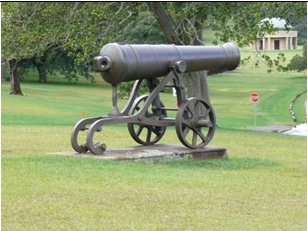 |
 |
|||||||||||||||||||||||||||||||||||||||||||||||||||||||
|
||||||||||||||||||||||||||||||||||||||||||||||||||||||||
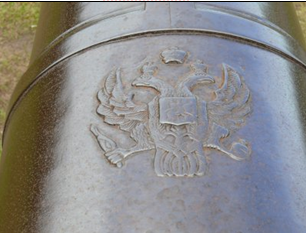 |
 |
|||||||||||||||||||||||||||||||||||||||||||||||||||||||
| Russian Imperial Eagle | M A |
|||||||||||||||||||||||||||||||||||||||||||||||||||||||
Morskaya Artillerii Translate to Naval Artillery |
||||||||||||||||||||||||||||||||||||||||||||||||||||||||
|
||||||||||||||||||||||||||||||||||||||||||||||||||||||||
|
||||||||||||||||||||||||||||||||||||||||||||||||||||||||
| Victoria – 36 Pounder Long Cannon Model 1833 | ||||||||||||||||||||||||||||||||||||||||||||||||||||||||
The two Russian guns presented to Victoria arrived on the ship Crimea on 12 October 1858 and consigned to the Government store-keeper. Despite some opposition the Victorian Government placed the guns in the Botanical Gardens on an elevated spot overlooking the southern and eastern portions of the city. It is believed the guns were moved in April 1867 to their present location at Victoria Barracks on St Kilda Road. Both were cast under the direction of John Armstrong, Director at the Alexandrovski foundry. They carry the double eagle of the Russian Tsar and are stamped with the initials `MA'; the translation of which is Morskaya Artillerii, meaning naval artillery. The guns had been taken at the Redan fortification in the Crimea in September 1855. The Redan fort, forming part of the southern defences of Sebastopol, was attacked by the British Second and Light Divisions on 8 September 1855. The ramparts were stormed, but the assailants were unable to make good their footing, and were eventually repulsed suffering 2,184 killed and wounded. On the same day Malakoff fort, forming an important part of the southern defences of Sebastopol, was stormed by 30,000 French, under General Pelissier. The Russians being taken by surprise, offered little resistance. The fall of the Malakoff, rendered the southern side of Sebastopol untenable, and the Russians retired during the night including abandoning the Redan fort. |
||||||||||||||||||||||||||||||||||||||||||||||||||||||||
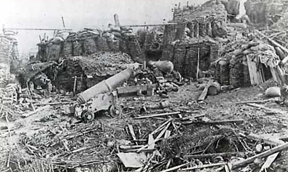 |
 |
|||||||||||||||||||||||||||||||||||||||||||||||||||||||
| Redan fortification abandoned by the Russians |
|
|||||||||||||||||||||||||||||||||||||||||||||||||||||||
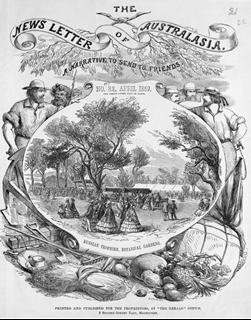 |
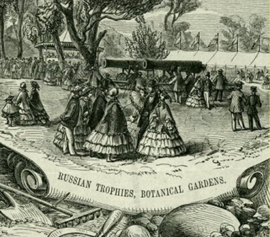 |
|||||||||||||||||||||||||||||||||||||||||||||||||||||||
|
|
|||||||||||||||||||||||||||||||||||||||||||||||||||||||
| 36 Pounder SBML (Russian) Long Cannon 1833 Model, Serial number 26028, on Venglovski Style Carriage | ||||||||||||||||||||||||||||||||||||||||||||||||||||||||
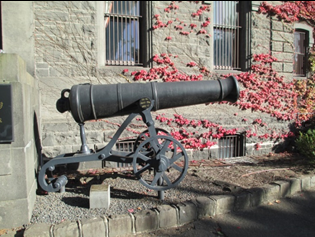 |
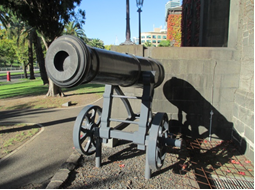 |
|||||||||||||||||||||||||||||||||||||||||||||||||||||||
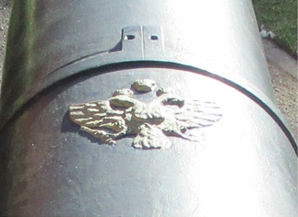 |
|
|||||||||||||||||||||||||||||||||||||||||||||||||||||||
|
||||||||||||||||||||||||||||||||||||||||||||||||||||||||
|
||||||||||||||||||||||||||||||||||||||||||||||||||||||||
| 36 Pounder SBML (Russian) Long Cannon 1833 Model, Serial number 26046, on Venglovski Carriage. | ||||||||||||||||||||||||||||||||||||||||||||||||||||||||
|
||||||||||||||||||||||||||||||||||||||||||||||||||||||||
|
||||||||||||||||||||||||||||||||||||||||||||||||||||||||
|
||||||||||||||||||||||||||||||||||||||||||||||||||||||||
|
||||||||||||||||||||||||||||||||||||||||||||||||||||||||
|
||||||||||||||||||||||||||||||||||||||||||||||||||||||||
|
||||||||||||||||||||||||||||||||||||||||||||||||||||||||
South Australia – 24 Pounder Long Cannon Model 1800 |
||||||||||||||||||||||||||||||||||||||||||||||||||||||||
The Adelaide Times of 22 January reports ‘Major O'HALLORAN, in rising to move the resolution standing in his name, said that he had recently been obliged by a gentleman with a copy of the correspondence which had passed between the "Under-Secretary of State for War and Mr De Salis with respect to the reservation of a certain portion of the Russian trophies of war for distribution in the Australian colonies, and the perusal of that correspondence had induced him to move the following motion—
‘That an address be presented to His Excellency the Governor-in-Chief, requesting that he will be pleased, on behalf of this Province, to petition Her Most Gracious Majesty, to reserve some portion of the trophies taken by the British troops during the late Crimean war, as a gift to her loyal and devoted subjects of South Australia.’ The South Australian Weekly Chronicle of the 28 August 1858 reporting on the opening of the second session of the Legislative Council held the previous day His Excellency the Governor-in-Chief informed the assembly ‘in compliance with your address of the 20th of last January to myself, I requested through Her Majesty’s Principal Secretary of State, that Her Majesty might be graciously pleased to direct a portion of the trophies taken by the British troops during the late Crimean war to be presented to Her Majesty’s loyal subjects in this province. I have directed the correspondence on this subject to be laid before you; and you will have the satisfaction of learning that Her Majesty’s Government has ordered two guns taken in the Crimea to be handsomely mounted, and presented to this colony, on behalf of Her Majesty. The guns arrived on 8 February 1859 at Port Adelaide on the Benvenue and moved by rail to Adelaide on 2 March. The South Australian Weekly Chronical reported on 2 April 1859. ‘If any other patriot wish to feast eyes on the trophies, if they pay a visit to Railway Goods Station, North-terrace, and look through H.R. Fuller & Co.’s cast-off drays and old lumber, they will be gratified with a sight of those trophies’. The guns were to remain at the station for several months, no money having been voted for their placement, but following a question from Major O’Hallaran in May 1859 the Chief Secretary advised a sum had been placed upon the Estimates and ‘If no better place were suggested, the Executive proposed that the platform for the guns should be erected in a commanding position in the Botanical Garden, a similar course having been adopted at Melbourne.’ 14 £150 was approved for the mounting of the guns and by 7 January 1860 this was completed. The guns on Venglovski style carriages were mounted on stone bases 9 feet apart, central within a platform 46 feet square. In February 1860 a tender from W. Wilcock for £19 12s was accepted for the construction of a chevaux-de-fries fence round the guns in the Botanic Gardens.
In August 1867, at the request of Colonel JH Biggs - the Volunteer Military Force Commandant, the guns were moved from the Gardens and tested to determine if they could be used as part of the ceremony to welcome HRH the Duke of Edinburgh. The test was successful and, mounted on new wooden carriages, on 31 October nine rounds were fired from the guns mounted on South Terrace when the Galatea, the vessel carrying HRH, was sighted. The guns were manned by members of the Adelaide Artillery. On HRH landing, a 21 gun salute was fired by No 1 Battery at Glenelg. Following the visit the Russian guns were retained by Army for drill purposes. Years later they were mounted on their Venglovski style carriages in front of the Armoury on North Terrace. There are unconfirmed reports one of the guns was fired daily as the time signal at midday. No record has been found to confirm this but records do show a brass 6-pounder was used for this purpose in December 1853, replaced by a ship’s carronade in 1863 to be replaced by a 6-pounder in 1872. The noon day gun practice ceased in 1882. The Register reported on 14 November 1901 one Crimean War gun was moved to the new military parade ground (Torrens). When the second gun was moved to Torrens Parade Ground is not known but both remain there to this day though they have been moved to different sites on the parade ground on several occasions.
Both were cast under the direction of Alexander Foullon at the Alexandrovski foundry. They carry the double eagle of the Russian Tsar.
|
||||||||||||||||||||||||||||||||||||||||||||||||||||||||
|
||||||||||||||||||||||||||||||||||||||||||||||||||||||||
| 24 Pounder Long Cannon Model 1800, serial number 19816, on Venglovski Carriage | ||||||||||||||||||||||||||||||||||||||||||||||||||||||||
|
||||||||||||||||||||||||||||||||||||||||||||||||||||||||
| 24 Pounder Long Cannon Model 1800, serial number 19816, manufactured at Alexandrovski Cannon Foundry in 1824 | ||||||||||||||||||||||||||||||||||||||||||||||||||||||||
|
||||||||||||||||||||||||||||||||||||||||||||||||||||||||
|
||||||||||||||||||||||||||||||||||||||||||||||||||||||||
| Back To Top | ||||||||||||||||||||||||||||||||||||||||||||||||||||||||
| 24 Pounder Long Cannon Model 1800, serial number 21112, on Venglovski Carriage | ||||||||||||||||||||||||||||||||||||||||||||||||||||||||
|
||||||||||||||||||||||||||||||||||||||||||||||||||||||||
| 24 Pounder Long Cannon Model 1800, serial number 21112, manufactured at Alexandrovski Cannon Foundry in 1828 | ||||||||||||||||||||||||||||||||||||||||||||||||||||||||
|
||||||||||||||||||||||||||||||||||||||||||||||||||||||||
|
||||||||||||||||||||||||||||||||||||||||||||||||||||||||
|
||||||||||||||||||||||||||||||||||||||||||||||||||||||||
| Tasmania- 36 Pounder Carronade | ||||||||||||||||||||||||||||||||||||||||||||||||||||||||
| Tasmania raised £28,375 for the Royal Patriotic Fund, a significant amount in comparison with both New South Wales and Victoria, given Tasmania’s small population. A request for cannons was made and two 36-pounder Carronades were despatched. The Tasmanian Telegraph reported on 23 March 1859 ‘The trophy guns taken in the late war with Russia, and presented by the Home Government to the citizens of Hobart Town, at the request of the Municipality, were landed from the Heather Bell, on Friday morning, the 18th instant, and conveyed to the Ordnance Stores.’ This certainly infers the guns belonged to Hobart. No doubt questions were raised and the decision had been made to allot one of the guns to Launceston when on 28 January 1860 The Launceston Examiner reported: ‘THE RUSSIAN GUNS.-The Hobart Town Municipality would desire it seems to take the credit to themselves for being the means of having two of these guns sent to this colony. Aldermen Lipscombe and Lewis have both stated that the applications originated with their council, and the worshipful body feels greatly offended that "favoured Launceston” should receive one the guns. Now the fact is, that the matter originated not with the Hobart Town Council at all, but with the Launceston Council, as the following copy letter, with which we have been favored at the Town Clerk's Office, will show :-" Mayor's Office, Launceston, 9th August, 1858 Sir,-Some time ago a paragraph appeared in the public journals to the effect that the Secretary of War in London, had expressed his desire to furnish colonies, who might desire to possess them, with trophies taken in the Crimean war. I may have too long delayed making the request on the part of the citizens of this place, that at least one of the guns captured may be given to this municipality, but I have now the honor to ask that His Excellency the Governor will be pleased to transmit this request to the proper authorities in London, and by the mail now about to leave. His Excellency will, perhaps, allow me to remind him that the exertions made here, and so successfully too, by the ladies of Launceston to aid the Relief Fund of that war entitle the inhabitants to the possession of such a trophy as may be rendered ornamental to one of the public squares. I have, &c., H. Dowling, Mayor. The Private Secretary, Government House, Hobart Town." The gun, therefore, has been sent to us direct by the Right Honorable the Secretary of War at our own special request, or rather of our Town Council for us, and it is possible that the high functionary in ordering this to be done, may at the same time have thought of conferring a similar boon on our southern friends’.
Hobart. The gun in Hobart is a 36-pounder carronade, serial number 30139, manufactured in 1847 at the Alexandrovsky Factory, whose Director at the time was Nikolay Fedorovich Butenev (Boutenev?). Despite the dispute to retain both guns in Hobart it appears from a report in The Mercury (Hobart) of 7 April 1866 ‘The gun sent out to this colony by Her Majesty in 1860 (sic) as a trophy of the Crimean war has hitherto found no resting place at all fitting or suitable. We are glad to hear, however, that that difficulty has at length been overcome.’ The report indicated it was to be placed in the new Town Hall rather than near the Franklin Monument. But Carronade 30139 was located in Franklin Square at least until the Second World War and for a time it was lost to public view. Brigadier Dollery located the barrel of the Carronade in a Council pound at Sandy Bay and the carriage at another Council Depot in 1950 and wrote to the Town Clerk asking if it could be placed at the reserve at the entrance to Anglesea Barracks. The Hobart City Council agreed to this and it was relocated to its present site following restoration by Tasmania Command Workshops in 195115. The relocation was not without comment as letters to the Mercury noted that whilst the restoration was admirable it was a gift to Hobart and it should not be in the hands of Defence.16
Launceston. The gun in Launceston is a 36-pounder carronade, serial number 26851, manufactured in 1840 at the Alexandrovsky Factory, whose Director at the time was Ivan (John) Armstrong.
The Launceston Examiner reported on 7 April 1860 ‘The Russian gun presented by the Home Government to the citizens of Launceston as a trophy of the late war has been landed from the schooner W. B. Dean.’ In an article written by Marion Sargent of the Launceston Historical Society, the history of the gun in Launceston is revealed. ‘The cannon was placed in the middle of Cameron Street outside the newly-opened Launceston Mechanics’ Institute as part of its opening exhibition. The gun was moved from that dangerous and inconvenient spot to a council yard where it languished until 1862. The council discussed where it should be located – Prince’s Square or the Horticultural Gardens? It was placed near the entrance to the Horticultural Gardens, which later became City Park. In 1878 the council moved the gun again to a corner of the old Commissariat yard, prompting several letters to the newspapers, either supporting the removal or demanding its reinstatement. Some believed the gun was a ‘barbarous relic of strife and bloodshed’ and should not be on public display. Others felt that ‘it ought to be held in high esteem and allowed a place of honour’. The Russian gun was returned to City Park to its present commanding position. In 1990 the Artillery Historical Trust of Tasmania, to commemorate the 130th anniversary of the Launceston Volunteer Artillery, placed a plaque with the carronade documenting the history of the gun. |
||||||||||||||||||||||||||||||||||||||||||||||||||||||||
Hobart 36-pounder cannon carronade, serial number 30139 |
||||||||||||||||||||||||||||||||||||||||||||||||||||||||
|
||||||||||||||||||||||||||||||||||||||||||||||||||||||||
|
||||||||||||||||||||||||||||||||||||||||||||||||||||||||
|
||||||||||||||||||||||||||||||||||||||||||||||||||||||||
| 36-pounder cannon carronade, serial number 30139, manufactured at Alexandrovski Cannon Foundry in 1847 (Donald Chilholm-Smith 2018) | ||||||||||||||||||||||||||||||||||||||||||||||||||||||||
|
||||||||||||||||||||||||||||||||||||||||||||||||||||||||
| Launceston | ||||||||||||||||||||||||||||||||||||||||||||||||||||||||
| 36-pounder cannon carronade, serial number 26851, on Venglovski Carriage | ||||||||||||||||||||||||||||||||||||||||||||||||||||||||
|
||||||||||||||||||||||||||||||||||||||||||||||||||||||||
|
||||||||||||||||||||||||||||||||||||||||||||||||||||||||
|
||||||||||||||||||||||||||||||||||||||||||||||||||||||||
|
||||||||||||||||||||||||||||||||||||||||||||||||||||||||
|
||||||||||||||||||||||||||||||||||||||||||||||||||||||||
New Zealand17 Two 18 Pounder guns captured at Sevastopol during the Crimean War were given to the Auckland Provincial Council in New Zealand by the Imperial Government following a request around 1857. The guns arrived in Auckland on the clipper Excelsior in April 1859 and being serviceable were based at Fort Britomart throughout the New Zealand Wars. Property of the Auckland City Council they were offered for sale or loan to Mr H. Seccombe in 1875 for purposes unknown but the offer did not go through. Instead the Council placed them in Albert Park. Permanent concrete pads 15 feet long and 11 feet wide with upstands on three sides were built for them around the flagstaff late in 1882 by contractor Alexander Archibald of Mt Eden at a cost of £50 18 00 ($A101.80). The concrete pads were broken up in 1905 when large RML guns were placed around the South African War (Boer War) Trooper’s Memorial. It is believed the Crimean guns were moved around the park on several occasions during the next decades. One was relocated near the bandstand, but later were seen by the Princes St gates. Around 1942, with the conflict reaching the Pacific region during World War II, the guns were removed from the park and are believed to have been placed at the Royal Akarana Yacht Club at Okahu Bay probably saving them from the scrap-iron drives. Following the war they returned to Albert Park to stand guard over one of the entrances from Princes Street but in October 1951 the City Council decided to permanently remove them from the park. Protests failed to prevent their removal and they returned to the Royal Akarana Yacht Club. Exposure to the salt air near the Club saw some deterioration to the guns. In October 1979 the Army offered to undertake restoration work on the guns in exchange for one gun being transferred to the new QE II Army Memorial Museum at Waiouru. This was agreed and both guns were moved to the Royal New Zealand Naval Dockyard , Devonport, for sand blasting. In 1980 they were moved to Papakura Camp where the 1st Field Workshop, Royal New Zealand Electrical and Mechanical Engineers, painted and reassembled the guns. Royal Akarana Yacht Club Gun, serial number 1709, was returned to Royal Akarana Yacht Club and placed near the flagpole where it remained until recent times (2018) when it was removed for restoration. It is difficult to read the markings on the trunnions, the right trunnion is rusted but years ago Master Gunner Wally Ruffell and researcher Colin Andrews translated the inscriptions. They reveal the gun is an 18 pounder manufactured in 1817 at Lugansk (now Luhansk, eastern Ukraine). At that time the factory was under the German Director, Nielus. This is the oldest gun of the 10 sent to New Zealand and Australia and the only one made at the Lugansk factory. |
||||||||||||||||||||||||||||||||||||||||||||||||||||||||
National Army Museum, Waiouru Gun serial number 20661, was delivered to the QE II Army Memorial Museum at Waiouru from Papakura in 1980. The Museum had been opened in 1978 and is now known as the National Army Museum. The gun mounted on its Venglovski pattern carriage was placed outside the Museum where it remains to this day. The markings on this gun are quite clear, the right trunnion reveals the serial number 20661, was manufactured at the Alexander factory (Aleksandrevsky factory), Petrozavodsk when the Director was Alexander Foullon. On the left trunnion shows the gun is an 18 pounder, weighing 88 pud and manufactured in 1825. On the top of the barrel is the double headed Imperial Eagle and on the face of the Breech is stamped MA indicating it is a naval gun. |
||||||||||||||||||||||||||||||||||||||||||||||||||||||||
|
||||||||||||||||||||||||||||||||||||||||||||||||||||||||
Royal Akarana Yacht Club 18 pounder , serial number 1709 |
||||||||||||||||||||||||||||||||||||||||||||||||||||||||
|
||||||||||||||||||||||||||||||||||||||||||||||||||||||||
| 14The South Australian Advertiser, 4 may 1859 p3 | ||||||||||||||||||||||||||||||||||||||||||||||||||||||||
| 15 File 1015/IT/3 Histories and Restorations of old guns and cannons, Military Museum of Tasmania | ||||||||||||||||||||||||||||||||||||||||||||||||||||||||
| 16 Mercury Newspaper 12 Oct 1950, Letter to Editor, See also The Mercury 30 May 1951. | ||||||||||||||||||||||||||||||||||||||||||||||||||||||||
| 17Great Guns – The Artillery Heritage of New Zealand. Peter Cooke,Ian Maxwell P18,19, 142,143, 249,250) | ||||||||||||||||||||||||||||||||||||||||||||||||||||||||
|
|
||||||||||||||||||||||||||||||||||||||||||||||||||||||||
|
||||||||||||||||||||||||||||||||||||||||||||||||||||||||



